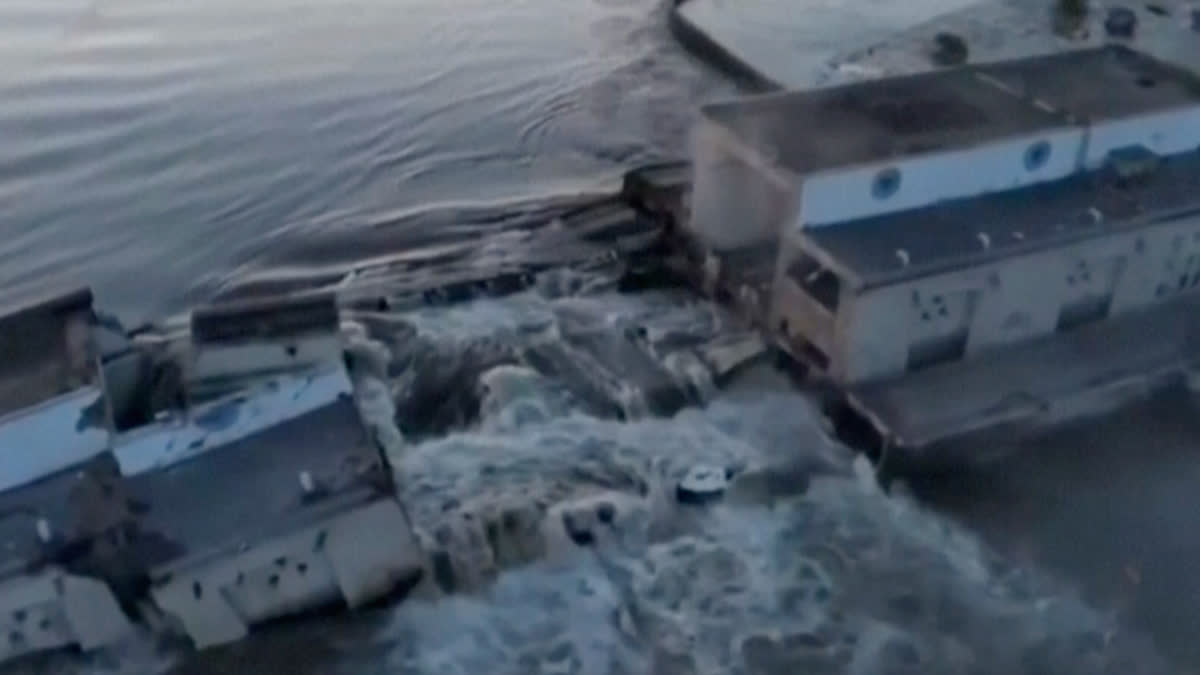KYIV, Ukraine:The dramatic rupture of the dam that upheld Ukraine's largest reservoir released a torrent of water Tuesday, raising fears of widespread damage and flooding in areas where tens of thousands of people live. It's not clear what caused the breach in the Kakhovka dam, which was already damaged by Russia's war in Ukraine.
The dam had held back the Dnieper River — a long stretch of which has become a front line — in a Russian-occupied area in the south. Ukraine accused Russian forces of blowing up the facility, while Russian officials blamed Ukrainian military strikes.
WHY IS THE DAM IMPORTANT?The 30-meter-high (98-foot-high) dam and associated hydroelectric power station are located about 70 kilometers (44 miles) east of the city of Kherson — a flashpoint of the conflict in a region that Russia has claimed to have annexed but does not fully control.
Together with the power station, the dam helps provide electricity, irrigation and drinking water to a wide swath of southern Ukraine, including the Crimean Peninsula, which was illegally annexed by Russia in 2014. Ukraine's vast agricultural heartland, which is partially fed by the Dnieper river, is crucial to worldwide supplies of grain, sunflower oil and other foodstuffs. Global wheat and corn prices rose Tuesday on concerns that production might be disrupted.
The dam — one of the world's biggest in terms of reservoir capacity — retained a volume of water nearly equivalent to that of the Great Salt Lake in the United States. The river waters supply cooling systems at the Zaporizhzhia nuclear power plant, where fighting has repeatedly raised fears of catastrophic accident.
WHAT HAS HAPPENED TO THE DAM DURING THE WAR?Russia has controlled the dam since the early days of the war, and Moscow and Kyiv have accused each other of shelling it. Ukraine said the troops occupying it detonated explosives last fall that damaged three sluice gates, which help regulate water levels. Signs of damage to the gates were evident in late May.
Even before the devastation wrought by Tuesday's breach, hydropower generation was at a fraction of peak levels. Ukrainian officials and independent experts say Russian forces have failed to maintain the dam — built in the 1950s — either deliberately or through neglect.
Earlier this year, water levels in the reservoir were so low that many across Ukraine and beyond feared a meltdown at the Russian-occupied Zaporizhzhia nuclear power plant. Since mid-February, the water level has steadily increased, according to data from Theia, a French provider of geospatial analysis.
The Ukrainian company that manages the dam and power plant estimates that it will take about four days for the reservoir to reach equilibrium and stop discharging massive amounts of water.
WHO AND WHAT IS AT RISK?As floodwaters swelled, both Russian and Ukrainian authorities ordered evacuations from among at least 80 towns and villages at risk on both sides of the river, though neither side reported any deaths. Officials said about 22,000 people live in areas at risk of flooding in Russian-controlled areas, while 16,000 live in the most critical zone in Ukrainian-held territory.
